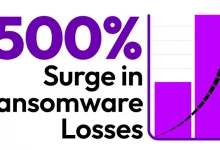Building a Robust Information Security Framework for Your Organization
In today’s digital era, organizations around the world are confronted with numerous cyber threats and security breaches. Protecting sensitive information and ensuring the confidentiality, integrity, and availability of data has become a top priority. To combat these challenges, it is crucial for organizations to establish a robust information security framework. This article aims to highlight the key components and steps involved in building such a framework.
1. Assess the existing security environment: Before formulating an information security framework, it is important to conduct a thorough assessment of the current security landscape within the organization. This includes identifying potential vulnerabilities, evaluating existing security controls, and analyzing the impact of potential threats. This initial assessment lays the foundation for developing an effective and tailored framework.
2. Define security policies and procedures: Security policies and procedures serve as the guiding principles for maintaining information security within the organization. These policies outline the expectations, responsibilities, and repercussions associated with information security. They should cover a wide range of areas, including acceptable use of technology, data classification, incident response, access controls, and data privacy. Regular updates and reviews of these policies ensure their relevance and effectiveness.
3. Implement risk management processes: Risk management is an essential aspect of any information security framework. Organizations should establish processes and mechanisms to identify, assess, and prioritize potential risks. This involves conducting risk assessments, defining risk thresholds, and implementing appropriate controls to mitigate identified risks. Continuous monitoring and evaluation of risks is vital to adapt and respond to evolving threats.
4. Enhance access controls: Controlling access to sensitive information is crucial in maintaining information security. Organizations should implement strong authentication mechanisms, such as two-factor authentication, to ensure only authorized personnel have access to critical systems and data. Access controls should be regularly reviewed and updated, and privileges should be granted on a need-to-know basis. Regular user access reviews help identify any unauthorized access or dormant accounts.
5. Implement robust network security measures: Network security forms a crucial component of a comprehensive information security framework. Organizations should deploy firewalls, intrusion detection and prevention systems, and secure encryption protocols to safeguard network infrastructure. Regular vulnerability scanning and penetration testing aid in identifying potential weaknesses and ensuring the security of network devices.
6. Educate and train employees: Human error remains one of the leading causes of security breaches, making employee education and training pivotal in building a robust information security framework. Employees should receive regular security awareness training to educate them about various threats, such as phishing attacks and social engineering techniques. Creating a culture of security awareness within the organization empowers employees to play an active role in protecting sensitive information.
7. Establish an incident response plan: Despite implementing robust security measures, organizations must be prepared to respond to security incidents effectively. Developing an incident response plan enables organizations to detect, respond to, and recover from security incidents swiftly. This plan should outline the roles and responsibilities of team members, establish communication channels, define incident severity levels, and ensure post-incident analysis to prevent similar incidents in the future.
8. Regularly monitor and audit: Monitoring and auditing the organization’s information security controls and processes on a regular basis is crucial in identifying and remedying any vulnerabilities or weaknesses. This includes monitoring system logs, conducting vulnerability assessments, and performing penetration tests. Regular audits help in identifying areas of improvement and ensuring compliance with industry standards and regulations.
In conclusion, building a robust information security framework is an essential undertaking for today’s organizations. By following the steps outlined in this article, organizations can enhance their security posture, protect sensitive information, and mitigate the risks associated with evolving cyber threats. Remember, information security is an ongoing process that requires dedication, continuous monitoring, and regular updates to stay ahead of the ever-evolving threat landscape.





